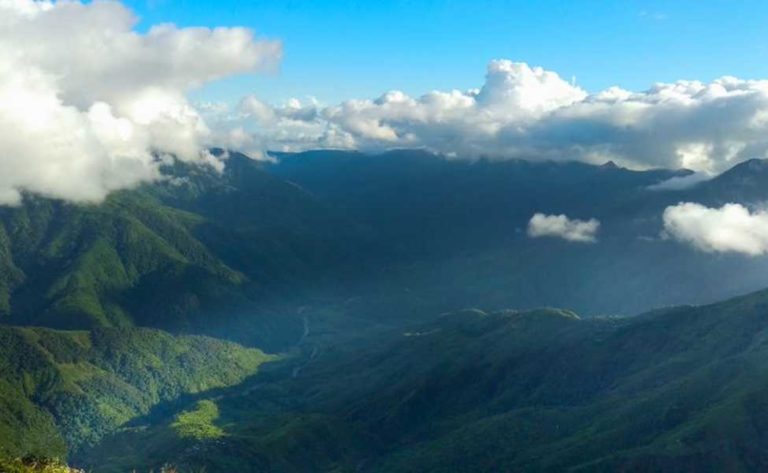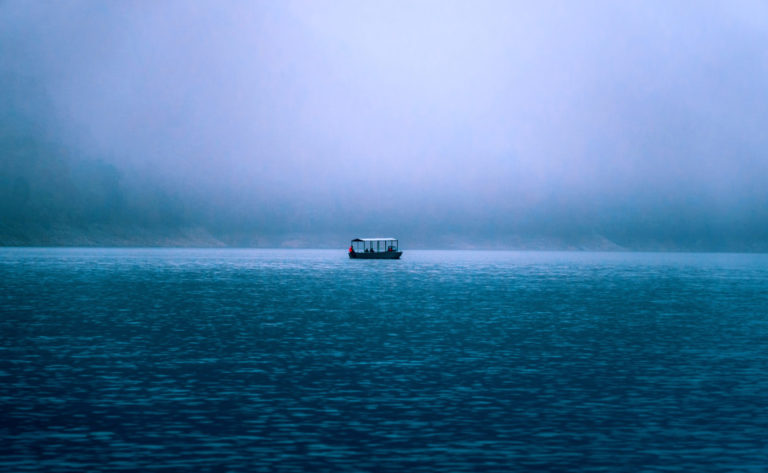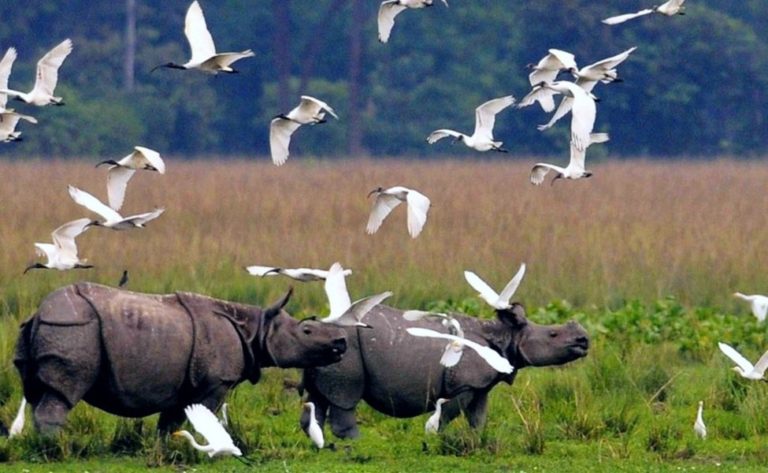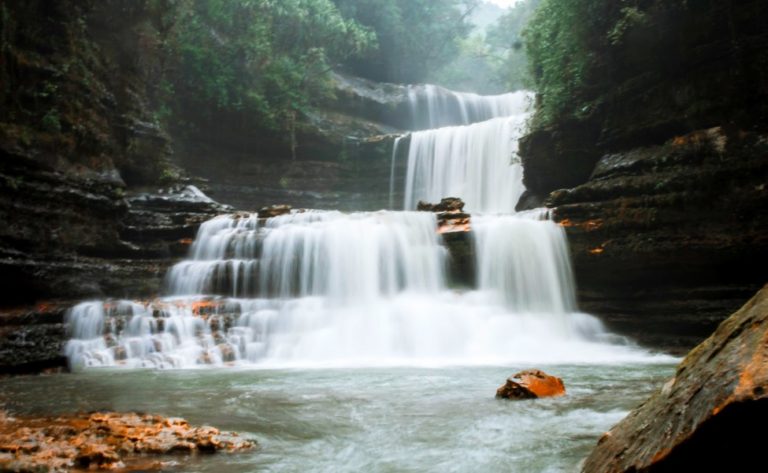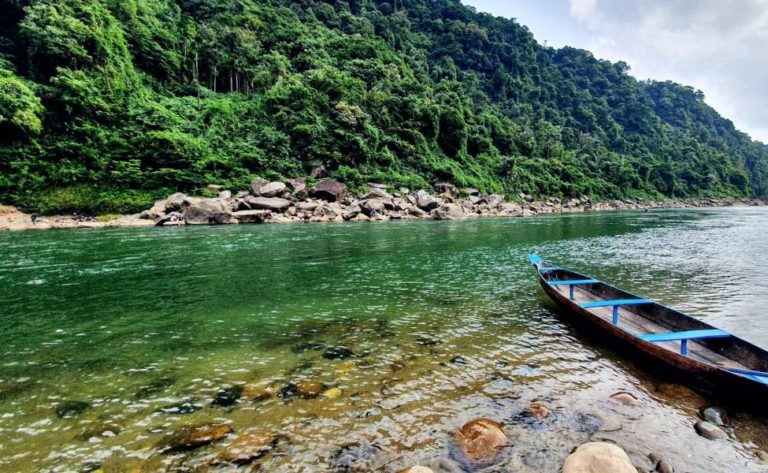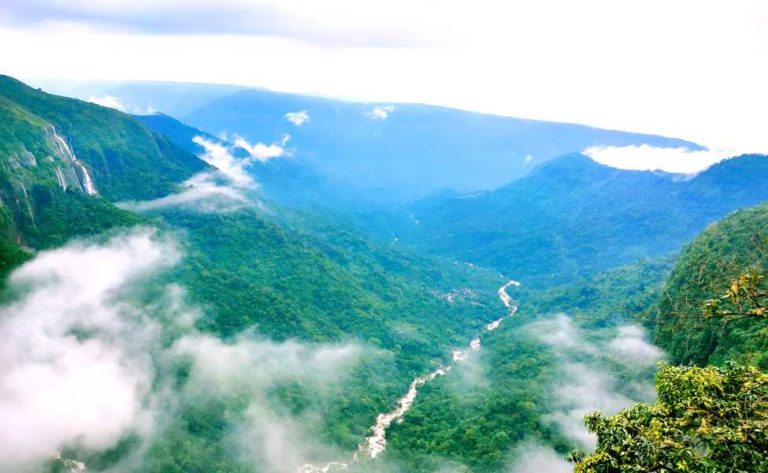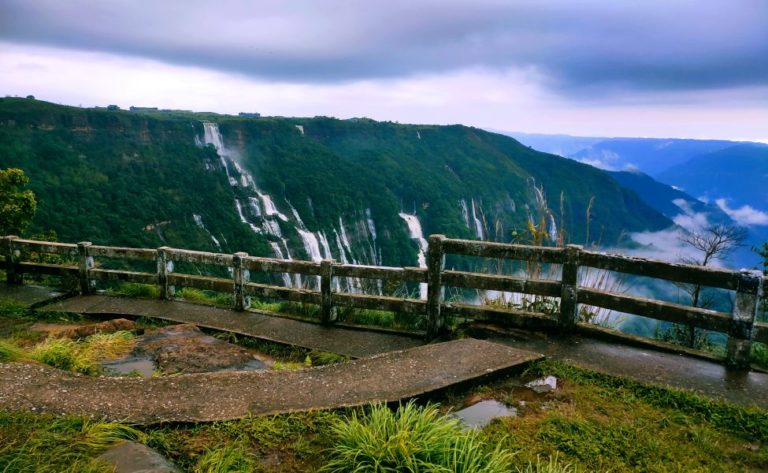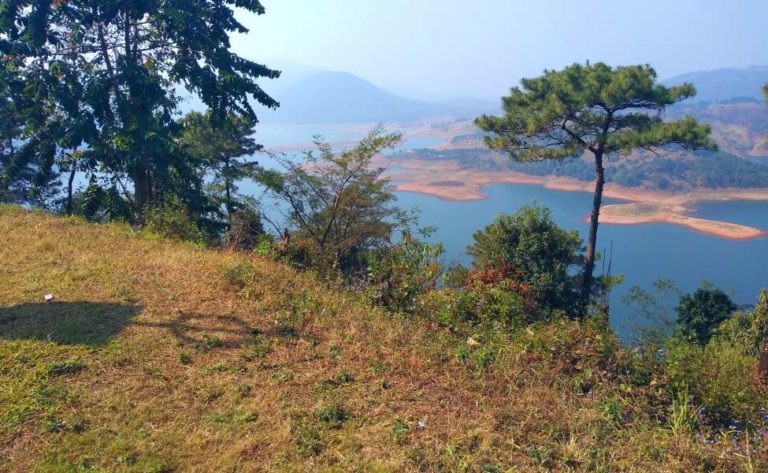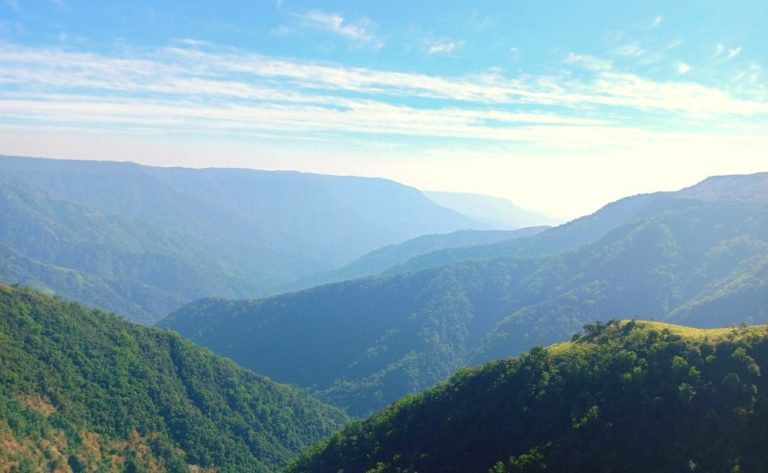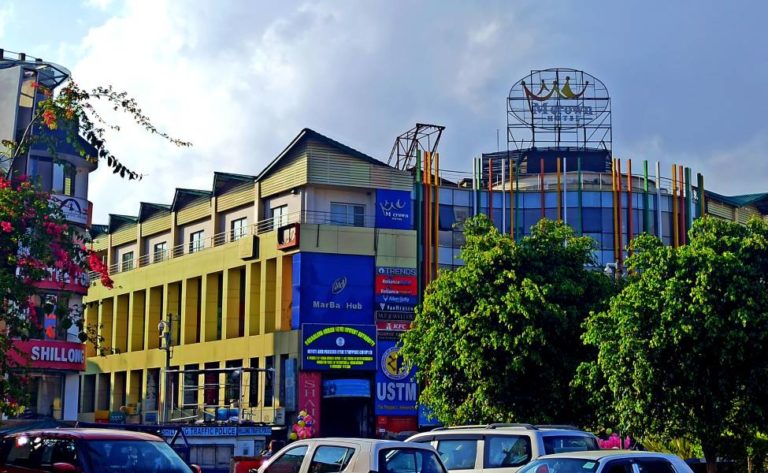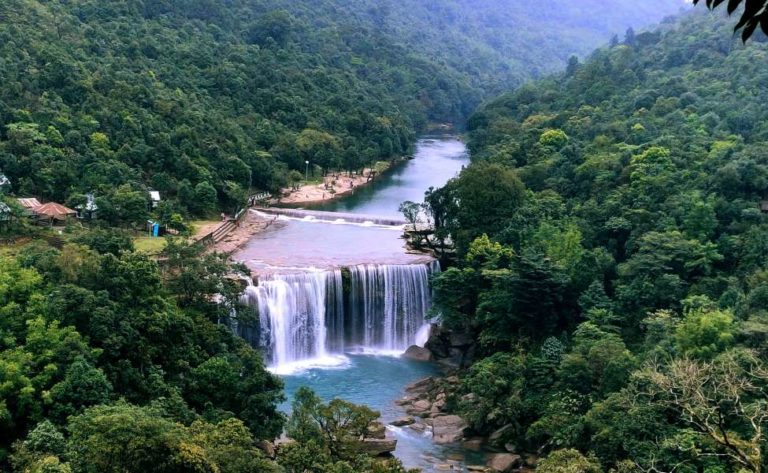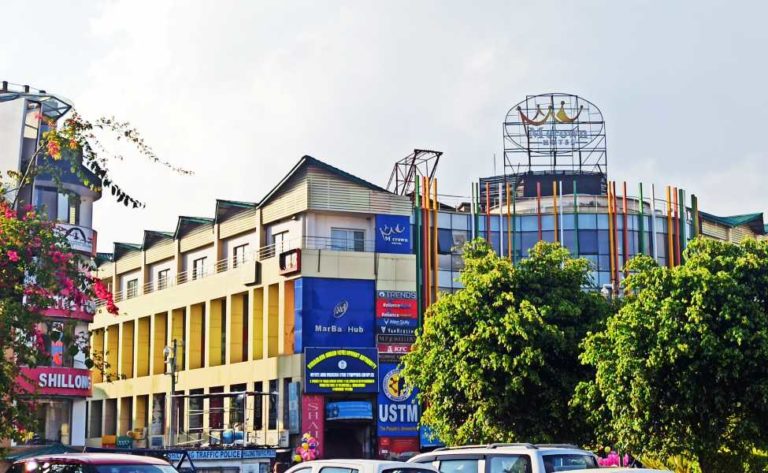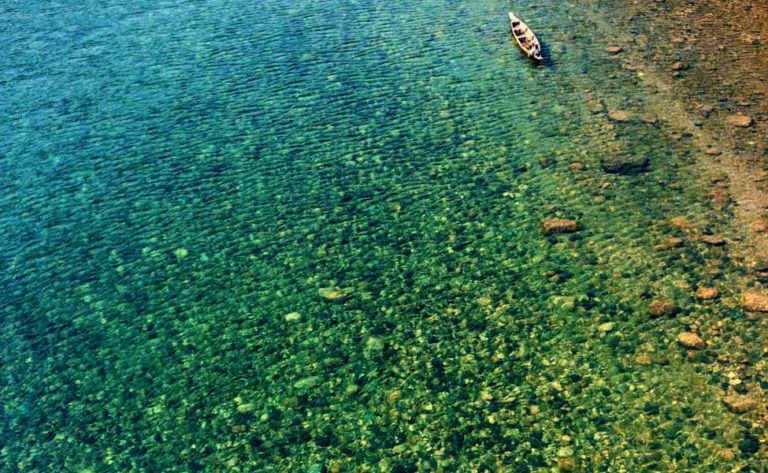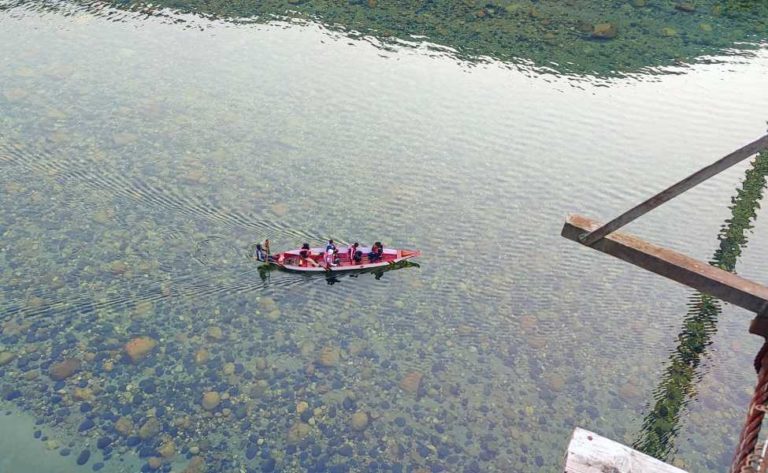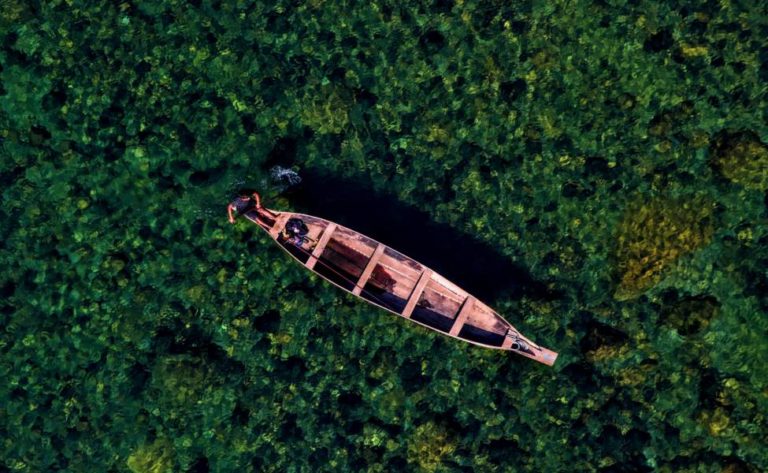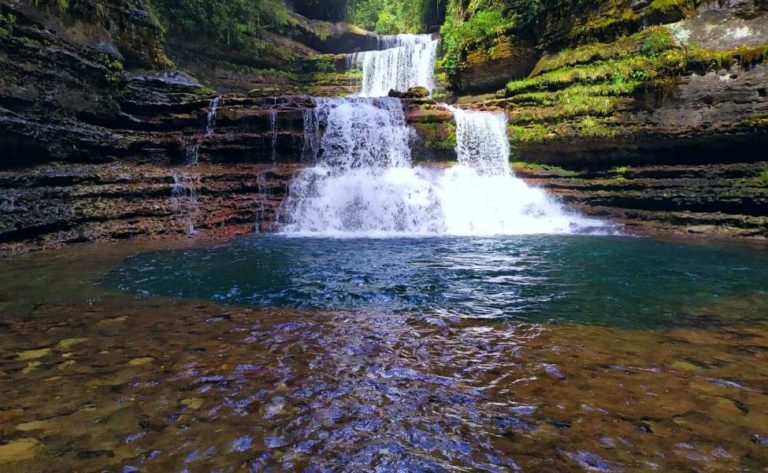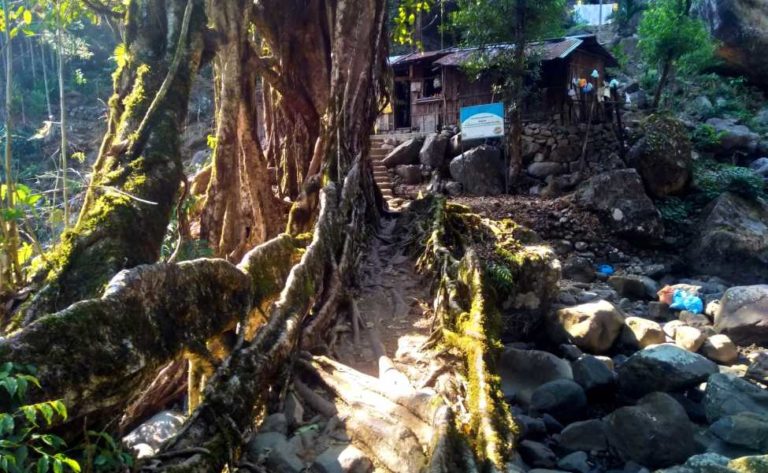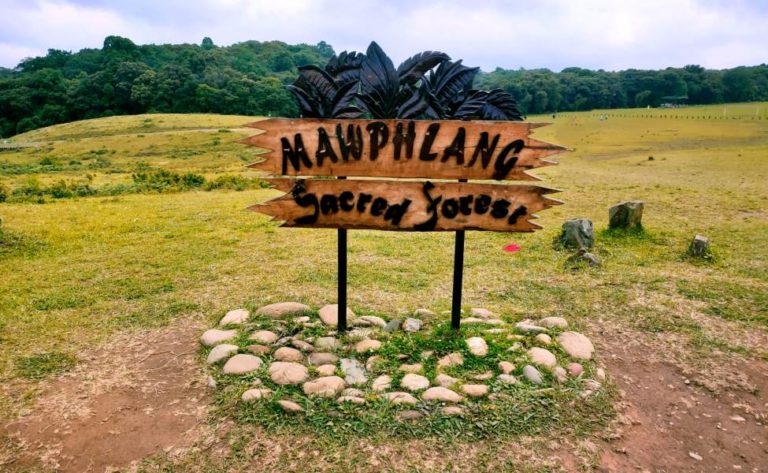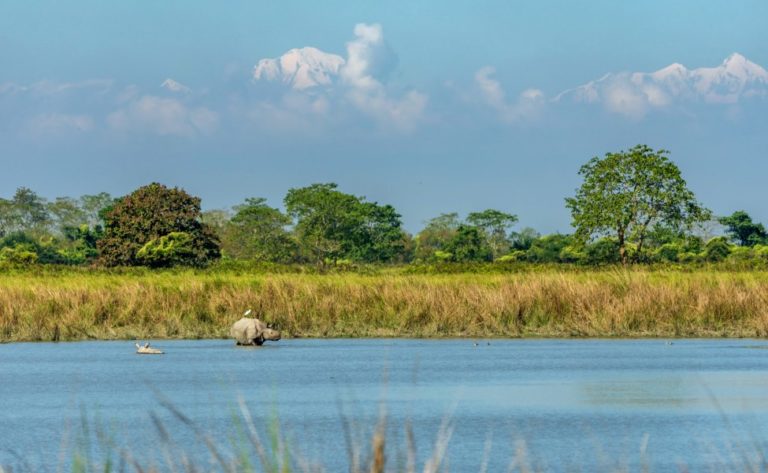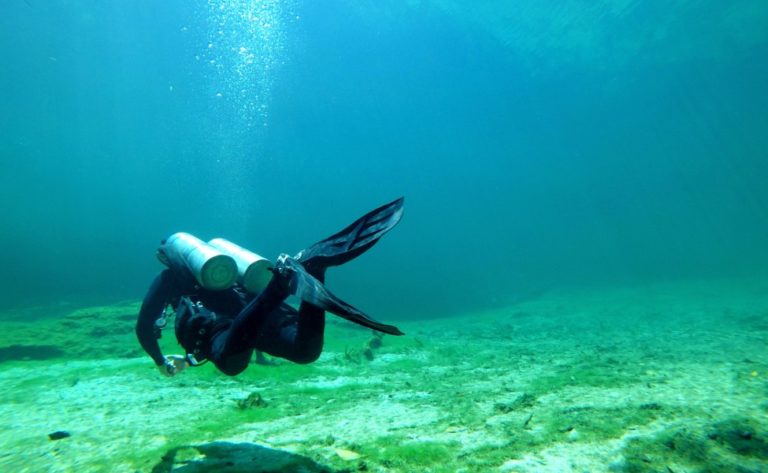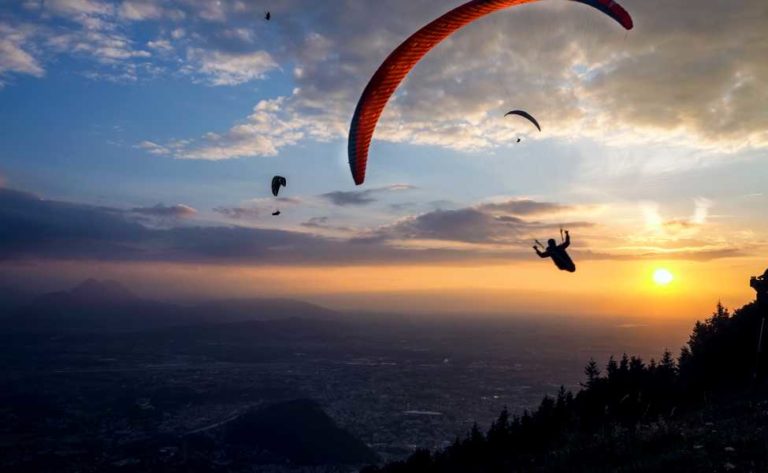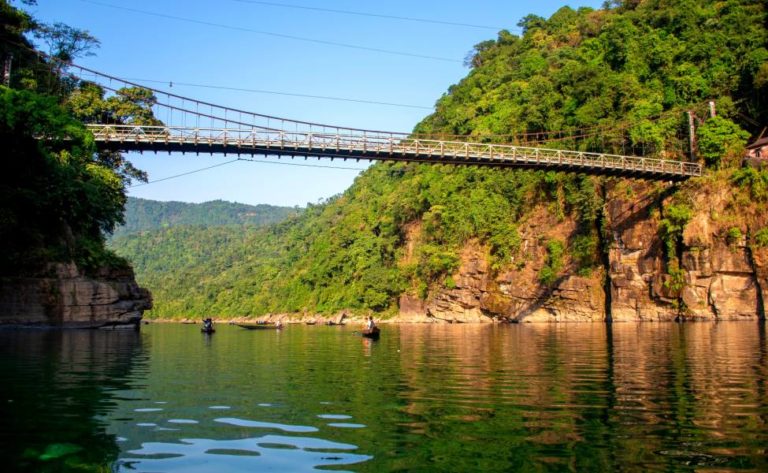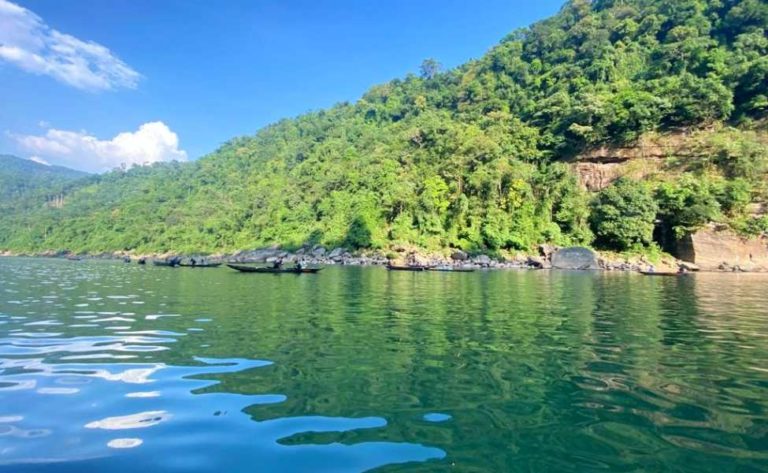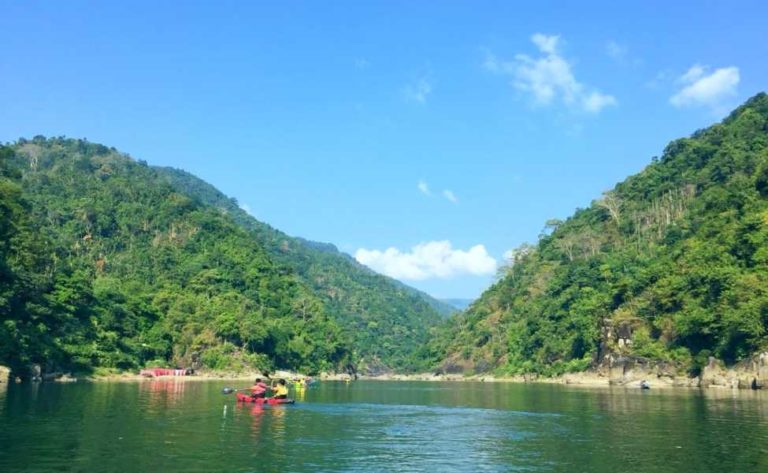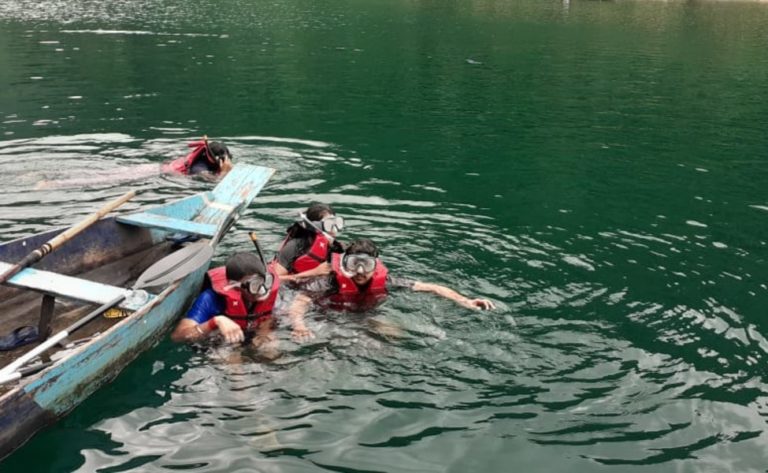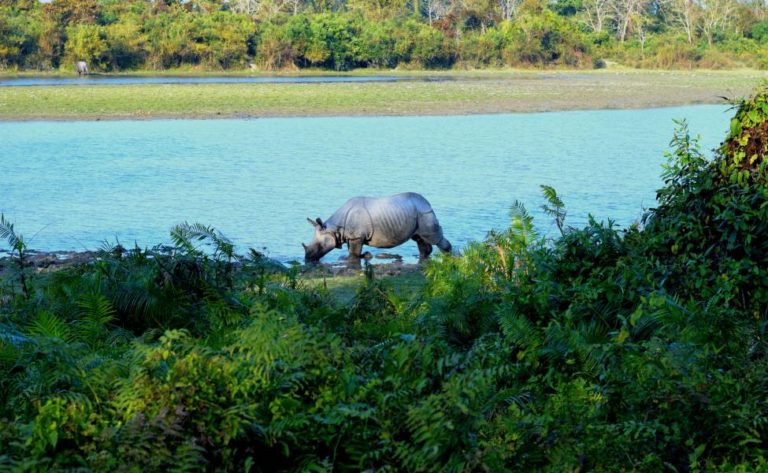
Places to visit in Northeast
Places to visit in Northeast
North-eastern India has been blessed with a wealth of natural beauty, which is captivating throughout the year. Summertime (April to June) is the best time for sightseeing, wildlife viewing, and adventure tours because the sky is generally clear. In the winter months of December, January, and February, the majority of the territory is covered in a thick layer of snow, giving the landscape a dreamlike appearance.
North East India gets incessant rainfall throughout the monsoon season, and the area’s waterfalls are at their most spectacular during this time. The best time to visit any of the north eastern states would be from October to November.
Travel Guides
Places to visit in Northeast(Assam)
Assam has a wealth of intriguing mysteries. Assam is the most alluring place since it is surrounded by treasures like huge tea estates, boats floating down the Brahmaputra River, and deep forests thriving with the rarest creatures. Being one of the famous “seven sisters” of Northeast India, Assam offers visitors the chance to experience a heady fusion of nature, history, and culture. One of Assam’s most renowned one-horned rhinoceros, also calls several of the state’s wildlife reserves home. Tourist places which you cannot miss in Assam are:
Kaziranga National Park
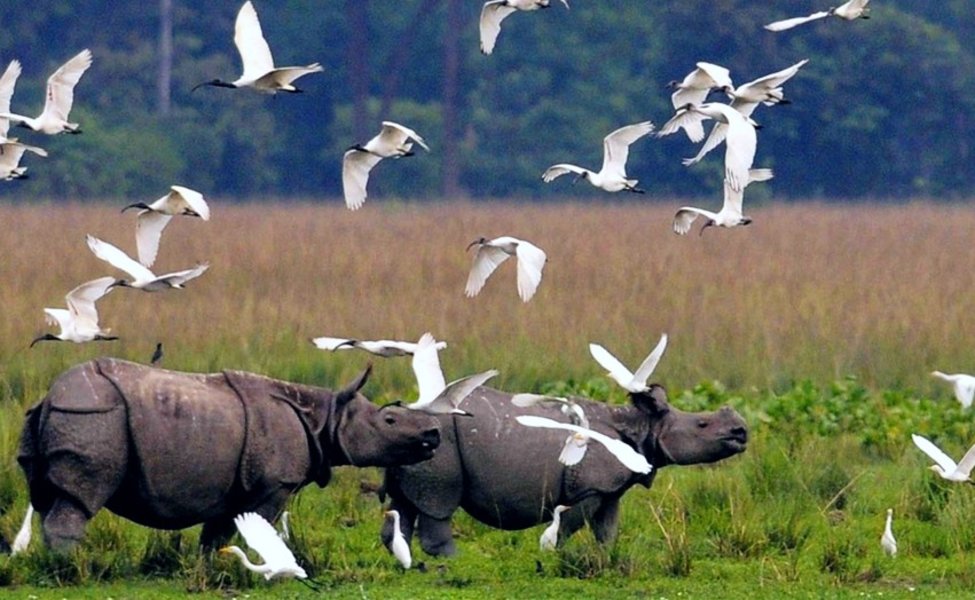
One of North East India’s most popular wildlife vacation spots, Kaziranga National Park is home to more than 2200 Indian one-horned rhinoceroses. The park is full of elephant-grass meadows, lush forests and lagoons. In 1985, the park was selected as a UNESCO World Heritage Site. One-horned rhinos, elephants, swamp deer, gibbons and water buffaloes are most commonly seen in the park. In the year 2006, Kaziranga was christened as a tiger reserve because the number of tigers has grown over time. Additionally, Bird Life International has named the park as an important bird area for the protection of wild birds. In particular, during the winter season, migratory birds travel to this place from Central Asia mostly.
Brahmaputra River
One of the biggest rivers in the world, the Brahmaputra ranks fifth in terms of average discharge. The Kailash region in the Himalayas is the river’s source. It then passes through Bangladesh and Assam before entering India through Arunachal Pradesh and joining the Bay of Bengal. One of the most beautiful and scenic getaways in Assam would be a luxurious but leisurely cruise through the mighty Brahmaputra.
Manas National Park
Manas is known for its massive tiger population. Along with being a fantastic location to see the Great Hornbill, it also has the greatest population of Bengal Florican in the world. There are almost 20 endangered species of animals and birds that are found in the park. Learn about rare sightings of strange animals like the Assam roofed turtle, pygmy hog, and hispid hare. Golden Langurs and Red Pandas are two other attractions in Manas. The wonderfully wild surroundings will inspire an overpowering passion for nature.
Sibsagar
Sibsagar is a showcase for amazing architectural, archaeological, and engineering prowess, as evidenced by the abundance of temples, palaces, stone bridges, tanks, and Maidams; which refers to the burial grounds of kings and queens. The Sibsagar District is home to about 350 historic sites. The most well-known ones include Kareng Ghar, Talatal Ghar, Tai Ahom Museum, Rang Ghar, and Sibsagar Lake. Being one of the oldest amphitheatres still in existence in Asia, the Rang Ghar deserves special notice among these.
Majuli Islands
The largest riverine island in the world, Majuli, attracts travellers from all over the globe. Majuli has a distinct culture and is primarily populated by tribal people. It is also the cultural capital of Assam. The venerable Assamese saint Srimanta Sankardeva founded the neo-vaishnavite tradition on the island sometime in the 15th century. The saint built numerous Satras, or monasteries, many of which are still standing and serve as symbols of the vibrant Assamese culture.
Dibrugarh
In the state of Assam, there is a small yet colourful and lively city called Dibrugarh. It comes as no surprise that it is known as the “Tea City” of India given the quantity of tea harvests that are planted here. The area is not only covered in verdant plantations, but the city also provides its tourists with a range of experiences, including adventurous pursuits. The city is also regarded to be fairly developed at the same time.
Haflong
Haflong, which is a part of the Dima Hasao district, is well-known for its stunning hills, lovely valleys, picturesque surroundings, and majestic mountains. In Assam, the town of Haflong is a well-liked tourist attraction, and it will certainly entice those who appreciate nature.
Places to visit in Northeast(Arunachal Pradesh)
Arunachal Pradesh, often known as “Land of the Rising Sun”, is the corner most state in India and the first state to welcome the dawning. One of the seven north-eastern states, it has a border with Bhutan, Myanmar, and China. Any visitor will be enticed by the stunning variety of flora and fauna that this lovely area has to offer. The magnificent mountains, gushing and pristine rivers, and waterfalls add to this breath-taking land’s grandeur.
Tawang Monastery
In Tawang, a remote town of Arunachal Pradesh, at an altitude of 10,000 feet, is where you’ll find this monastery. Tawang Monastery, is the birthplace of the Dalai Lama and is also the biggest Buddhist monastery in the nation, and is considered a huge historical site. This 400-year-old monastery is considered as the second-largest monastery in the world.
Ziro Valley
The oldest town in Arunachal Pradesh, Ziro, is well known among tourists for its beautiful mountains, rich rice fields, and peaceful surroundings. The Apatani Tribe makes up the majority of the population in Ziro Valley, which also hosts the “Ziro Music Fest,” the most popular music festival in India. It’s a location where you can visit and spend days there in total peace. It is considered to be among the top travel attractions in Arunachal Pradesh.
Nagula Lake
This lake, one of Tawang’s most beautiful views, is a must-see in Arunachal Pradesh. Nearly 4300 feet above sea level, the high-altitude lake is a gorgeous body of water with an intriguing atmosphere. It is a fantastic tourist destination in North East India to take in the peace and quiet meditation. Except for the months of summer, the lake is frozen for the majority of the year. You may simply hike up to the lake and enjoy a delightful picnic there.
Siang River
It is the ideal site to visit in the North East and Siang River is a tributary of the Brahmaputra River, and the river areas are inhabited by the Adi tribe of Arunachal Pradesh. The Siang River’s rafting is a sought-after activity by most travellers. You should definitely go on this journey with your friends.
Gorichen Peak
You will be able to take in the breathtaking views of the Gorichen Peak on your route from Bomdila to Tawang. Given that the summit is situated between Tawang and West Kameng districts at a height of 22,500 feet, it is one of the most difficult climbs in India’s northeast. About 164 kilometres separate Gorichen Peak from Tawang Town, and towards the north, it borders China. Sa-Nga Phu is another name for Gorichen Peak, which the local tribe of Monpa considers to be a sacred peak that shields them from all harm.
Nuranang Falls
On the route from Tawang to Bomdila, there is a beautiful waterfall called Nuranang Falls that is concealed by long expanses of dense forest. These falls, which are also called the Bong Bong falls, are 100 metres high. It’s great to experience this place’s tranquilly with a companion by your side. So, be sure to include this location on your schedule if you’re planning a romantic getaway to the North East. Any couple who visits the falls is said to experience serendipity while there.
Madhuri Lake
The lake, which bears Madhuri Dixit’s name, is one of the top destinations in Arunachal Pradesh. However, Shonga-tser Lake was its previous name. This lake was formed by a flash flood caused due to an earthquake in 1950. You can enjoy some delicious momos at a little army cafeteria close to the lake while taking in the serenity.
Places to visit in Northeast(Meghalaya)
Meghalaya, one of the most heavenly states in the country, lies hidden away in the hills of the eastern sub-Himalayas. She has been endowed by nature with plenty of sunshine, rain, pristine woods, high plateaus, cascading waterfalls, clean rivers, and meandering streamlets. One of India’s seven north-eastern states is Meghalaya. It is bordered by Assam mostly and by Bangladesh in the lower parts. It is well known for its incessant rainfall, thick and huge forest areas, and rich biodiversity.
Shillong City

It is one of the most gorgeous cities of Northeast India, where one can visit many beautiful local attractions from parks to lakes, waterfalls, museums and viewpoints etc. The main cultural centre and state capital of Meghalaya are both located in Shillong. The old hill town’s allure can still be felt in many places, and its culture and setting offer the ideal fusion of traditional and modern.
Cherrapunji and Mawsynram

One of the nicest spots to visit in India is Cherrapunji, which is acclaimed for being the second rainiest place in the world. It is famous for its root bridges as well. Tourists come to this location for the breath-taking excursion options. Waterfalls and caves, such as Nohsngithiang Falls, Nohkalikai Falls, Dainthlen Falls, and Mawsmai Cave, are among its main draws. Mawkdok Valley, Double Decker Living Root Bridge, and Thangkharang Park are also some of the thrilling tourist attractions. Mawsynram, a small hamlet in the Khasi hills of Meghalaya. It is renowned for being the rainiest place on the earth. It is said to receive 39 feet or nearly 11,872 mm of rain each year. It is a natural paradise, and visitors adore the clean air, cascading slopes, and magnificent green mountains.
Jaintia Hills

Krang Suri Falls, one of India’s most exquisite waterfalls, is located in the Jaintia Hills. Anyone who looks at it is inspired by the water’s surreal shade of blue. In these intriguing Jaintia highlands, which are home to the ruins of the Jaintia King’s Summer Palace, is also the lovely village of Nartiang. Here you can also find the Nartiang Monoliths, a sizable group of massive stones that date back to the Stone Age.
Dawki

The West Jaintia Hills of Meghalaya, is well known for its crystal clear river, Umngot. One of the spotless rivers in the country where the bottom can be seen is the Umngot River. One thing you must do in Dawki is take a boat trip on the Umngot River.
Nohkalikai Falls
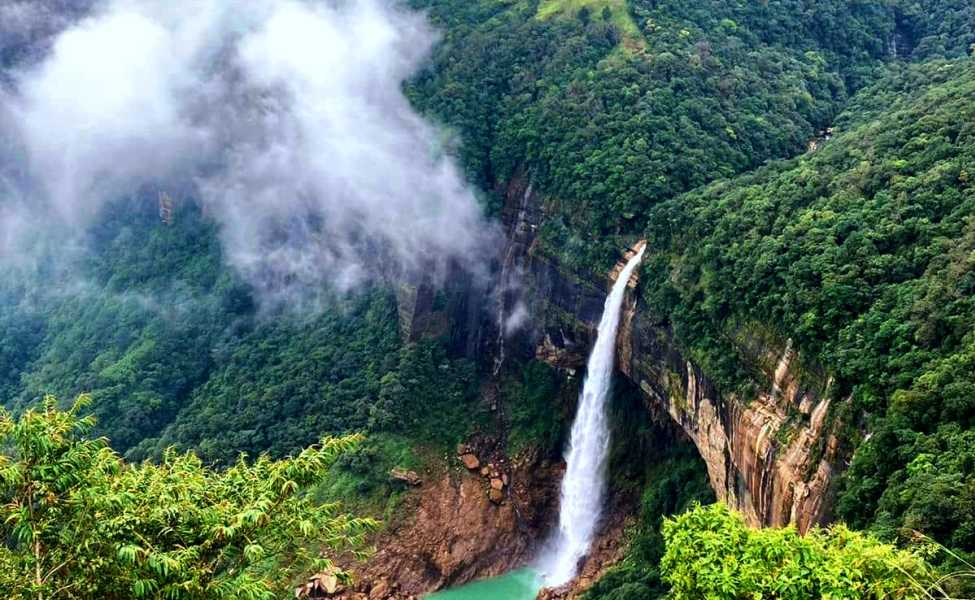
It is rated as the fourth loftiest waterfall in the world and descends from a height of 1100 feet. It is very near from Cherrapunji and a short hike will lead you to the turquoise pool. The viewing point of the falls is a nice place to take in the breathtaking views of the Nohkalikai Falls. It is better to come here in the spring or summer season because it mostly remains clouded throughout the monsoon and winter season.
Laitlum Canyon

The East Khasi hills, where Laitlum Canyon is located, provide a broad, panoramic perspective of the entire valley of canyons. Trekkers, nature enthusiasts, photographers, and explorers all adore these beautiful rocky formations. Laitlum Canyon has an extraordinary, unmatched, and incomparable beauty.
Mawsmai Cave
One of the caves in Northeast India that allows enough light to flow through so that visitors may view the limestone architecture and uneven walls is this one. Because of years of abrasion and exposure to underground water, the stalactites and stalagmites in this natural wonder have been carved out into a variety of structures that will astound you. Mawsmai cave draws a lot of attention because it is the only lit cave in Meghalaya.
Umiam Lake

This artificial reservoir, which is located in Shillong and is a popular tourist destination in North East India, may be visited all year round. Long areas of lush coniferous trees encircle it. This lake is frequently used for a variety of boating activities, and the adjacent park is ideal for people of all ages. The Khasi hills that surround the lake add to its attractiveness and provide visitors with breathtaking scenery making it one of Shillong’s most well-known tourist attractions.
Mawlynnong Village

This village, which was named Asia’s cleanest in 2003, is a superb illustration of sustainable and environmentally responsible living. Even the trash cans, which are about 85 feet tall, are built by using bamboo. Mawlynnong Village is the starting point of the hike to the Living Root Bridge, one of the popular tourist destinations in North East India. This charming village is framed by thatched Khasi homes and is immaculately clean. The village, which is the cleanest in India and is just about 100 kilometres from Shillong, is quite close to Bangladesh.
Places to visit in Northeast(Tripura)
Tripura is a landlocked state in India’s northeast. Assam, Mizoram, and Bangladesh are its neighbours. On its north, south, and western sides, Bangladesh encircles Tripura. Kerala leads the nation in natural rubber production, with Tripura coming in second. The state is well recognized for its handicrafts, particularly for its bamboo goods, wood carvings, and handwoven cotton fabrics. Tripura’s numerous ethnolinguistic groupings have created a composite culture.
Rudrasagar Lake and Neer Mahal
The lake is located in the Melaghar block of the Sipahijala district. By taking into account its surroundings and diverse flora and fauna, it is regarded as one of the wetlands for conservation and sustainable usage. The monarch of Tripura built Neer Mahal in the middle of the 1930s on the lake’s northeastern side. The majority of tourists come to the palace and the lake to go boating because the palace is surrounded by water.
Sepahijala Wildlife Sanctuary
The abundance of animals and plants that call Sepahijala Wildlife Sanctuary in Tripura home has led to claims that it is the state’s biodiversity heaven. Within the boundaries of the sanctuary there is a zoo, a deer park, and a botanical garden. Approximately 456 different plant species can be found there, along with animals like the Barking Deer, Pigtailed Macaque, Rhesus Macaque, Capped Langur, Spectacled Monkey, Slow Loris, Clouded Leopard, Civets, Jungle Fowl, Wild Pig, etc.
Ujjayanta Palace
Around this beautifully built architectural gem of the North-eastern region of India, the entire city of Agartala spreads out. Ujjayanta Palace was built in 1901, and every inch of it exudes true regal majesty. A rippling lake serves as a lovely contrast to the rich green of the expansive grounds. For visitors visiting Tripura, it serves as a lovely museum.
Places to visit in Northeast(Sikkim)
North-eastern India includes the state of Sikkim. It shares its borders with Tibet, Bhutan, Nepal, West Bengal. The second-smallest and least populous state of India is Sikkim. Sikkim, which is a section of the Eastern Himalaya, is known for its rich wildlife and for having alpine and temperate climates. It also has Kangchenjunga, the third-highest peak on Earth and the highest peak in India.
Gangtok
One of the most famous hill destinations in India is Gangtok, which is the capital of Sikkim. The city at a height of 1650 metres, provides breath-taking views of Mt. Kanchenjunga on the bright sunny days. Those who want to explore the Himalayan Mountain ranges by trekking, makes their base here. Gangtok is undoubtedly one of the India’s most scenic mountain towns. There are several natural sights in Gangtok and the adjacent areas, including the Ban Jhakri Falls, Tashi viewpoint, Tsomgo Lake and others. One of the best spots in North East India for white river water rafting is the Teesta River.
Nathu La Pass
At a height of 14450 feet above sea level, on the boundary between India and Tibet, is the old silk route that was once used by traders and merchants. No matter the season, Nathula’s temperature is always below freezing, and the area is teeming with Himalayan vegetation and wildlife. It is one of the most notable tourist havens in Sikkim, and Gangtok is close by.
Kanchenjunga Base Camp
Every adventure seeker has Kanchenjunga Base Camp on their wishlist. It has its unique difficulties because it is 8,586 meters above sea level. The dominant mountain of Kanchenjunga is so high that even the walk to its base camp is a major experience that never lets up. In contrast to other treks in the Indian Himalayan range, the walk to Kanchenjunga Base Camp is rather unique. Geographically speaking, Kangchenjunga ranks third among the world’s highest peaks, together with its five large massifs.
Pelling
The second most famed tourist place in Sikkim, after Gangtok, is the lovely town of Pelling. In addition to acting as the starting point for a variety of treks in the area, Pelling offers places for mountain riding, rock climbing, village excursions, and meditation. All adventure seekers and lovers of nature should spend their vacations in this spectacularly scenic town of Pelling.
Ravangla
One of the well-known tourist spots in south Sikkim is Ravangla, which is midway between Pelling and Gangtok. A relaxed location tucked in the mountains where you may slow down the pace of your life and soothe your senses in nature, it is a little town that isn’t supposed to be touristy. The elevation of Ravangla is 7000 feet. Ravangla is a special place with a wide variety of plants and animals, little settlements outside the main town where you may observe local life, breathtaking views, ancient monasteries, and cultural events.
Yuksom
Yuksom is a small town in Sikkim that is well-known for its spectacular vistas of snow-capped mountains and valleys. Attractions like the Kanchenjunga Falls, the Tashiding Monastery, the Singhore Bridge, the Khecheopalri Lake, the Dubdi Gompa, the Mani Hall, and many other Yuksom attractions are just a few of the numerous that indulge in offering soul-stirring experiences. It serves as Kanchenjunga Base Camp’s starting point as well. Visit Yuksom without a doubt if you want to discover the unusual side of the north-east.
Yumthang Valley
Experience the enchantment of nature as you take in the stunning mountain scenery and the Yumthang valley flower-filled surroundings. Located in North Sikkim, it offers a wealth of tranquil beauty that feeds the soul. It is 140 kilometres from Gangtok. Take a tour of Yumthang Valley to be captivated by the stunning scenery and amazing surroundings.
Gurudongmar Lake
Gurudongmar Lake, is located in Sikkim at a height of 17800 feet, which is considered to be the lake located in the highest altitude, in India. You shall cherish the breath-taking scenery of the snow-capped mountains, flower-filled valley, winding roads, and innumerable waterfalls. Due to its abundance of attractions, this place is a vacationer’s dream destination. The permit is the most important thing to watch out for. You must first obtain a permit to travel there, maintain it safely until your return, and bring heavy wool clothes even in May and June to get here.
Places to visit in Northeast(Manipur)
Situated in the north-eastern part of India is the state of Manipur. Along with the Indian states of Assam, Nagaland, and Mizoram, it shares borders with Myanmar. It is also relatively isolated from the rest of India, which seems to be a trait shared by all the north eastern states. The state’s traditional and folk-dance styles serve as the strongest examples of its artistic and cultural diversity. Loktak Lake, Keibul Lamjao National Park, Tharon Cave, and Kangla Fort are some of the most popular Manipur attractions.
Imphal Valley
The Imphal Valley is one of the ideal locations for adventure seekers because it has little rivers, lovely farmland, and picturesque surroundings. You will be more than satisfied with what they have to offer and the people here will make you feel extremely welcome. An hour’s drive from the city, this oval-shaped canyon is extraordinarily picturesque.
Loktak Lake
The exquisite Loktak Lake, the massive freshwater lake in Northeast India, is one of the most cherished tourist locations in Manipur. The lake attracts visitors from around the world because of its ethereal beauty. It is famous for its circular floating marshes.
Kangla Fort
The Kangla Fort, which is situated near the Imphal River’s banks, is a symbol of Manipur’s pride. The Manipuri or Meitei term “Kangla” means “dry land.” Many Meitei emperors ruled the region from the fort that was formerly the capital of Manipur, in the past. The fort is currently a popular destination for tourists in the state and is open to visitors. For those who appreciate art and history, a trip to the Kangla Fort is a necessity because of its enormous historical, religious, and archaeological value.
Places to visit in Northeast(Mizoram)
With Aizawl serving as its capital, Mizoram is one of the seven states that make up Northeast India. Mizoram means “Land of the Hill People”. Mizoram is a region with lakes, rivers, and rolling hills. The state’s length and width are covered with up to 21 major hill ranges or peaks of various heights, with valleys scattered around.
Khawnglung Wildlife
The Khawnglung Wildlife Sanctuary is located at an elevation of 1300 metres and spans a territory of 35 sq km. Hoolock Gibbon, Sambhar, Serow, Wild Boar, and Barking Deer are just a few of the many species that can be found in the thick forests, along with Leopards.
Vantawng Falls
The highest waterfall in the hill state of Mizoram is Vantawng Fall, which is considered a well-guarded secret. It is one of Mizoram’s top locations and a symbol of the region’s undiscovered gems. It is located over a hundred kilometres from the city of Aizawl and takes its name from the Vanva River, which is located close to Thenzawl. The fall’s height is measured at 750 feet, and while getting near to it is difficult due to the sheer forested mountains surrounding it, so a good viewing tower has been built.
Durtlang Hills
It provides visitors with a breath-taking perspective of the entire city of Aizawl. Enjoy leisurely strolls along the hillside while savouring the natural vistas. If you visit during or after the rain, you could come upon minor waterfalls on your ascent. Your breath will be taken away by the lush surroundings, and the town’s overall panoramic view is superb
Dampa Tiger Reserve
The largest wildlife reserve in Mizoram is the Dampa Tiger Reserve. It takes up 500 sq. km of space. Numerous species, including the swamp deer, tiger, leopard, elephant, and hoolock gibbon, can be found in Dampa’s lush jungles. One of the last remaining protected areas for tigers and a variety of other animals and bird species is the Dampa Tiger Reserve.
Places to visit in Northeast(Nagaland)
As soon as the name Nagaland is said, images of a mysterious nation filled with vivid people fiercely defending their culture—dancers, warriors, and head-hunters—as well as mountains, valleys, and woods immediately come to mind. Nevertheless, Nagaland has gone a long way over the years and cemented a place for itself on the map of popular tourist destinations throughout the world, going from utter mystery to holding a world-famous cultural festival. It is often referred to as the “land of celebrations” since each tribal holiday is celebrated with pomp and circumstance and is dressed in lavish and vibrant traditional garb.
Dimapur
On the border of Assam and Nagaland is the commercial town of Dimapur. It is one of Nagaland’s largest cities and the state’s commercial hub. On one side, the area is surrounded by hills and vegetation, and on the other, the Dhansiri River encircles it. There are plenty of nearby sights and places to visit, including the Triple Falls, the Nagaland Science Centre, and the Kachari Ruins.
Kohima Museum
There is no better site to learn about the history, culture, way of life, of tribes of Nagaland than the Kohima Museum. On display are artefacts, crafts, and tools used by the tribes to complete their everyday tasks. The various hut types from various tribal settlements are on show. Some of the intriguing items in the Kohima Museum include the dialects of many tribes and clan motifs, as well as musical instruments and kitchenware made of buffalo horns and bamboo.
Mokokchung
It is a town in Northern Nagaland that is close to the boundary of Assam and Nagaland. It is a settlement of the Ao Naga indigenous people and has been a centre of activity for a century. At a height of 1350 meters, the settlement of Mokukchung is renowned for its wealth of inherited customs. Rhododendrons surround the tidy, peaceful historical village, which provides a sweeping vista of the Naga hills. Langpangkong Caves is one of the most well-known sights in the Mokukchung area.
Mon
The Konyak Nagas, a tribe well-known for headhunting in Nagaland, are amiable and live in Mon. There are still some tribe members who have tattoos on their faces and blackened teeth. There are various tribes that have lived in Mon for many centuries. Tourists like the unusual location away from the bustle of the city in Mon, which is known for its untainted beauty of nature. This region provides visitors with a beautiful view of the mountain peaks, tiny towns, organic fruits, a picturesque setting, and some hiking opportunities.
Doyang River
One of Nagaland’s largest rivers is the Doyang River. Locals of Wokha District also call this long river Dzu or Dzulu. The Tsui, Tullo, and Tishi rivers are this river’s principal tributaries. With its surrounding woodlands and variety of water activities, Doyang River is one of the most popular tourist destinations. Additionally, you can go river fishing and have a nice picnic by the Doyang River.
Khonoma Green Village
This location will be perfect for you if you want to see greenery in the north-eastern region of India. When viewed from a distance, the village’s position on a hilly base gives the area its true charm. The homes here are surrounded by an abundance of lush vegetation. It is a well-known location to see some of the unusual agricultural practices, such as terrace farming.
Weather in Northeast
Due to its relief and the impact of the southwest and northeast monsoons, northeast India has a subtropical climate. The climate is influenced by the Himalayas in the north, the Meghalaya plateau in the south, and the capital cities of Nagaland, Mizoram, and Manipur in the east. Visit during the summer if you want to escape the heat, and during the monsoon if you want to see nature at its most beautiful. However, because of the beautiful weather from November to May, these are considered the ideal months to visit North East India. Depending on the state, North East India’s winter climate can range from mild to bitterly cold. Arunachal Pradesh and Sikkim, which are higher up, experience sub-zero temperatures with associated snowfall and frozen landscapes. Low-altitude areas like Mizoram and Tripura are fortunate to have mild winters with comfortable temperatures that make it possible to travel across navigable plains. Generally speaking, this time of year is glistening with clean air and a revitalising mood.
For people to tour the charming mountain villages and rural areas of North East India, winter is the ideal time of year. The valleys acquire an unparalleled beauty when covered in snow. Interesting tribes, daring cultures, exhilarating wildlife, and flourishing vegetation stand out vehemently. In Arunachal Pradesh, Roing and Tawang are particularly ethereal places to travel during the winter. If you want to visit North East India’s national parks and animal sanctuaries, winter may be the best time to go. In fact, this is a wonderful moment to visit the renowned Kaziranga National Park. Witnessing Ganges River Dolphins and one-horned rhinoceroses as the air is tingling with a delightful coolness. It’s ideal to go on safari while it’s cool outside. Additionally, this time of year is bustling with colourful events like the beautiful Hornbill Festival.
The monsoonal climate of Tripura and Assam is common, with variations in hilly regions from subtropical to temperate.
Arunachal Pradesh has a climate and weather that is considerably different from the rest of India. At lower elevations and in the valleys covered in dense swampy forest, particularly in the east, the climate is extremely hot and humid, while at higher elevations it becomes uncomfortably cold. 15 to 21 degrees Celsius on average during the winter and 22 to 30 degrees Celsius during the monsoon. The temperature can occasionally get to 40 to 42 degrees Celsius between June and August.
Meghalaya is susceptible to the monsoon’s whims. Altitude has an impact on the climate. The Khasi and Jaintia Hills have a particularly lovely and energising environment. Although the weather in the Garo Hills is pleasant and humid year-round, except in the winter, it is neither too warm in the summer nor too cold in the winter. The sky over Meghalaya is rarely cloud-free.
The centre of Mizoram is traversed by the Tropic of Cancer. As a result, there are beautiful summers and mild winters, and the climate is moderate. Heavy rains fall in the state from May to September.
In Nagaland, it frequently rains. The typical rainfall ranges from 175 cm to 250 cm. Most of the heavy rain falls between June and September, which is a period of 4 months. Reduced rainfall is experienced from April through May. In February and March, the northwestern region is characterised by strong winds. The weather is pleasant.
The state’s climate can be loosely classified into three climate zones: tropical, temperate, and alpine. The environment is chilly and damp for a large portion of the year since rain falls frequently. Everywhere, the general trend of temperature decline with height is valid. Pre-monsoon rain falls in April and May, while the monsoon (south-west) runs generally from May through early October. In comparison to other districts, the north district receives slightly less rainfall.
Frequently Asked Questions on Northeast
A subtropical climate prevails in northeast India, which also experiences influence from the southwest and northeast monsoons due to the region’s relief. The hills of northeast India experience a huge drop in the temperature during winter months and the plains experience humid and warm temperatures during summers.
The distinctive flavours and aromas of regional herbs, along with your favourite elements adapted from Chinese and Tibetan cuisines, are what set the cuisine of the North East apart from other regional cuisines. Even the most intricate of specialties are produced using the mildest spices and straightforward cooking methods, frequently using the freshest catch from your own pond and local beers as a beverage. With little oil and fresh ingredients, these are also the healthiest and most organic dishes on the Indian table.
While there are many non-vegetarian foods that are popular in the northeast, vegetarians don’t need to fear because there are many vegetarian options accessible.
The north-eastern region of the country, which is characterised by the presence of large rivers, dissected topography, dense woods, frequent floods, and international borders, is mostly accessible by air travel because it takes less time and is more on the comfortable side. Though many places have access to railways and roadways.
Northeast India is now offering up new travel opportunities, and people are excited about this detour. You will need inner line permits, nevertheless, in order to travel to the majority of North-eastern states. Due to ethnic conflict in countries like China, Myanmar, and Bhutan, this law is in existence. However, you shouldn’t find this to be too difficult for you; all you need to know is how to complete your tasks.
Please note that foreign visitors who have an e-Visa for India may apply for a Protected Area Permit. To apply for such permits, you do not necessarily need to have a regular tourist visa.
Yes, winter lasts from December to February in North East India. During this time, numerous tourist destinations in Arunachal Pradesh, and Sikkim, turn into winter wonderlands
The North Eastern Region is a very important part of our country and has its importance in politics and administration . It consists of seven sister states (Arunachal Pradesh, Assam, Manipur, Meghalaya, Mizoram, Nagaland, and Tripura) and one brother state (Sikkim), collectively called the “Seven Sister States.”
Nearly 220 languages are spoken by people in North East India. They are members of the Indo-European, Sino-Tibetan, Kra-Dai, Austroasiatic, and a few other Creole language families.
Majorly the languages that are commonly used in North Eastern states are Assamese, Bengali, Hindi, English, Nagamese, Khasi, Garo, Bodo, Kokborok, Mizo, Meiteilon, etc.
In the vast majority of North East India, families are headed by women. Even for single female travellers, the entire northeast is extremely safe. This heavenly location has established itself as a secure area for all people with the gradual development in tourism. Additionally, the locals are pleased to welcome visitors to their stunning motherland. Many travellers have expressed their gratitude to the locals for their assistance in a variety of trying circumstances. The people of Northeast India are friendly and inviting, and they are always willing to provide a helping hand.
There are many options available nowadays thanks to the development of tourism and technology. There are many good and decent hotels, posh resorts, homestays, dormitories and lodges available to choose from, in every part of North East India.
If you’re a culinary enthusiast who enjoys travelling, Assam cuisine should be at the top of your list. Due to the usage of the finest herbs, fresh fruits, and vegetables, the Assam cuisine has a distinctive flavour that is characterised by Bengali influence and comprises a delicate taste that would make anyone go crazy. The Khaar, Masor Tenga, Duck Meat Curry, Aloo Pitika, Paro Manxho (Pigeon Meat Curry), etc. are some of the must-try Assamese delicacies.
Yes, North East India is an excellent spot to begin one’s romantic life because of the snow-capped Himalayan mountains, dense forests, alpine forests, tranquil scenic lakes, and rural villages. There are many locations in North East India that could entice you if you are an adventurous couple. The majority of well-known tourist destinations in North East India have developed luxurious lodgings packed with cutting-edge amenities that will make your honeymoon journey absolutely unforgettable.

